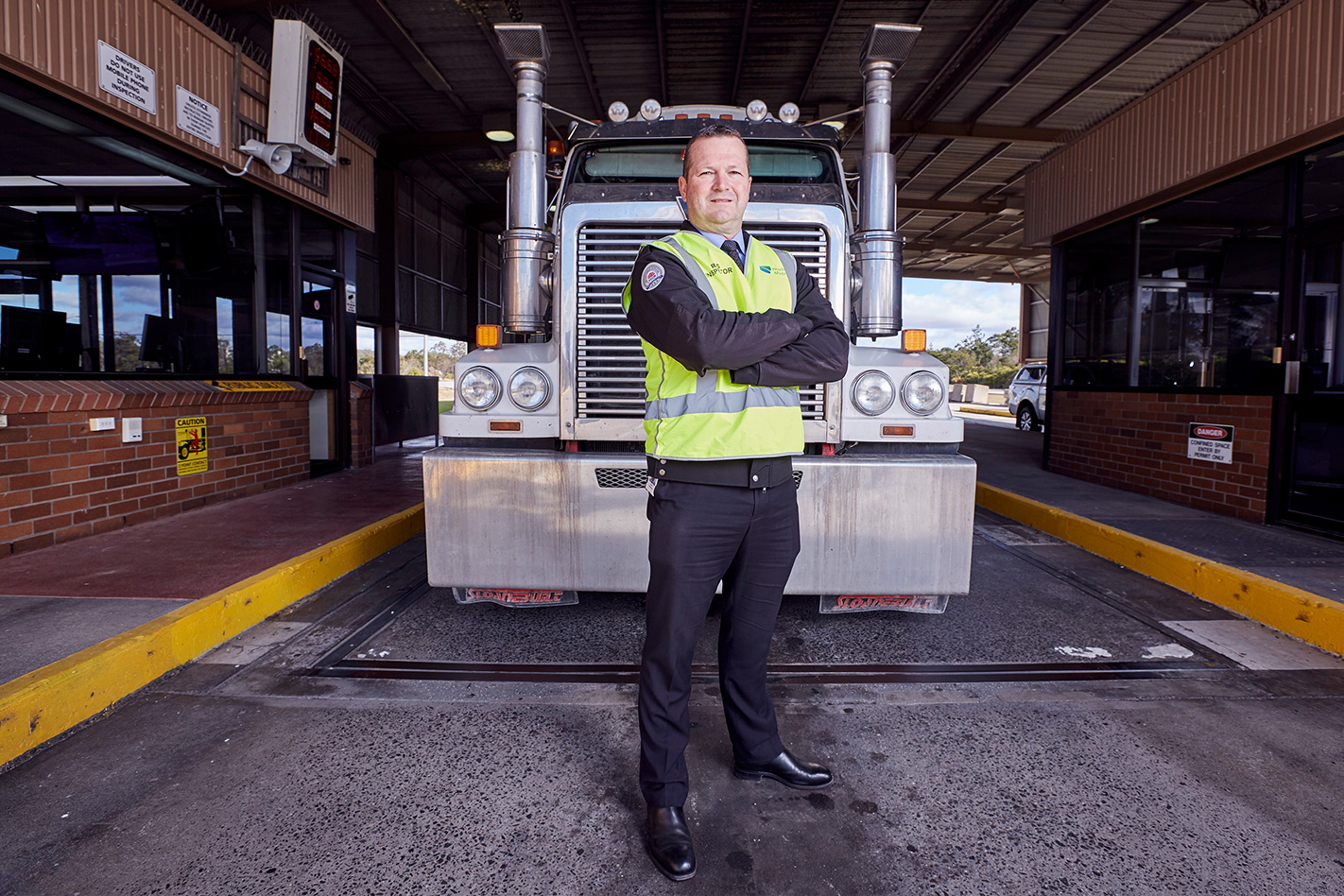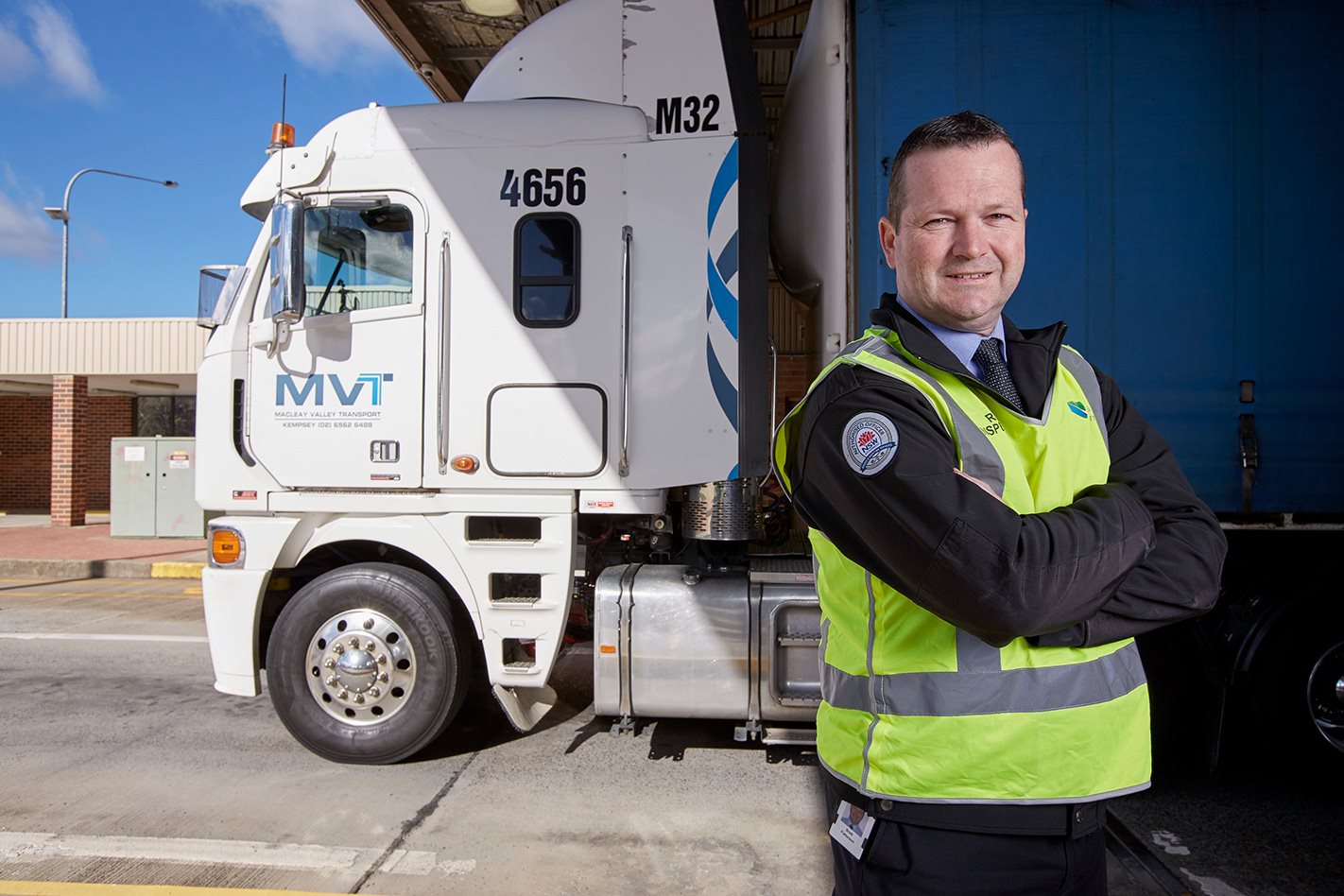Brett Patterson, 46, grew up like most of us, with a fascination for cars, trucks and mechanical things. For the past 22 years he’s been working at a critical junction of the automotive world, on the front line of heavy- vehicle compliance enforcement for NSW Roads and Maritime Services. With well over 400,000 heavy vehicles operating on NSW roads at any one time, it’s a huge matter of safety for the community.

Since 2011, Patterson has been Senior Manager of Compliance Operations, supervising a team of more than 250 compliance inspectors around the state – variously mobile operations, or at eight heavy vehicle inspection stations dotted along the state’s major road transport routes.
And they’ve a lot of work to do. NSW has the highest number of registered heavy-goods vehicles (192,000), and of those registered in neighbouring states, about 65 percent travel through NSW.
In 2017, Patterson’s compliance crew made more than half a million vehicle inspections, across a range of compliance programs. They also assist the Police in large operations, including compliance checks on modified cars.
Patterson knows his vehicles, having worked as a mechanic for eight years. In 1996, he was offered the opportunity to become an inspector with the (then) NSW Roads and Traffic Authority. “I know this will sound unusual, but the driver for me was the opportunity to improve road safety.”

For the most part, he says, heavy-transport operators are doing the right thing, so Roads and Maritime Services streamline its inspections as much as possible. Four of the state’s eight heavy-vehicle inspection stations are now largely automated; compliant trucks literally need not even come to a standstill.
“At our larger weighbridges we have electronic screening technology where the vehicle leaves the highway, goes through a number of checks like registration, mass, Safe-T-Cam sightings, previous compliance histories … A vehicle that’s beamed through the screening as compliant, will continue on its journey – it might have slowed down to 40km/h, but off it goes. Or if it’s directed, we will do a more thorough inspection.”
The things that keep Patterson awake at night are trucks with defective brakes and steering, worn-out suspensions, lapsed registrations, overloading and drivers who ignore national fatigue management laws designed to ensure they get adequate rest.
Patterson loves that no two days in his job are ever the same. “I’m directing operations, leading staff, engaging with drivers and operators, dealing with our customers … I look after all the inspectors state-wide, so I could be in the office, or out in the field. Our work is reported up through our management team, right through to the [Roads, Maritime and Freight] Minister.
“What we are delivering is important, especially with the current road toll and heavy vehicle crashes. We had a terrible January this year, in a two-day period three heavy vehicle fatal crashes occurred, resulting in the death of five people.
“Occasionally we have to deal with interactions that are angry and aggressive and that’s disappointing. Both parties have a job to do and we try to understand the challenges that heavy vehicle drivers have, in getting from A to B, the traffic on the roads, ensuring that their trucks are maintained and loaded safely. We’ve got a role in ensuring compliance, not just for their vehicles, but for other vehicles, operators and users on the roads.
“That’s sometimes a hard message to deliver and demonstrate, but I think we are getting through, working together and changing the culture for a safe transport industry.”





